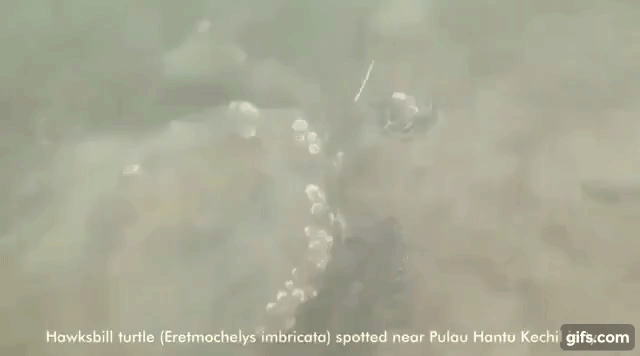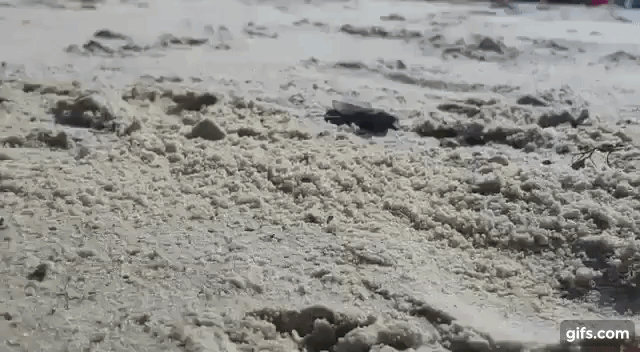Singapore’s own Crush and Squirt
 June 4, 2018
June 4, 2018
By Aidan Mock: Reflecting on World Turtle Day, I recall two memorable characters from my childhood, Crush and Squirt – the chilled-out turtles from Finding Nemo and Finding Dory. The turtles in the movie were plying the east coast of Australia, but did you know that the hippie turtles depicted in the movie have friends that live right here in Singapore? Singapore’s southern islands has resident Hawksbill turtles (Eretmochelys imbricata), and as it turns out, this little red dot might play an important role in facilitating Hawksbill turtle migration in Southeast Asia, and several brave turtles have already set up shop in our waters! Here’s introducing our humble half-shelled residents! Explore their life story in Singapore, and hop on to the current for a ride!

Hawksbill turtles are a rare sighting at Pulau Hantu, but they have been seen by friends of the blog in 2005, 2009, 2011 and most recently in 2017. Regular divers, which include marine scientists working on our reefs, have reason to think that there is a resident turtle who has made the Hantu reef its home.

Aside from Pulau Hantu, the turtles have also been observed at Tanjong Beach on Sentosa, East Coast Park, and even at Pulau Semakau.
While scientists and researchers have long been aware that sea turtles nest on our shores, it is difficult to get a glimpse of this activity as it usually happens in the dark of the night when there are few people on our beaches. But eventually, someone gets lucky! Here’s a turtle laying eggs on the East Coast Park beach! What a spectacular event to witness!
(If you do have the incredible fortune of chancing upon a turtle laying eggs, keep your distance, let NParks know ASAP at 1800-471-7300, and please remember do not shine your torch or other lights at it, as it might disorient or disturb the turtle and cause it to abandon its nesting attempt and return to sea.)
So what are these turtles doing on our shores? Scientists seem to have found evidence that suggests that turtles have very high natal site fidelity, which means that they will return to a place close to where they were born to lay their eggs. It is likely that the hawksbill turtles seen in Singapore are from a long line of turtles that have all chosen to nest in Singapore or in the nearby regions. Imagine being able to navigate across the world to get back to the exact same room that you were born in to give birth, oh and you have to do it without GPS. That’s pretty neat.

In a talk on 10th Feb, Singaporean turtle researcher Rushan bin Abdul Rahman suggested that Singapore’s shores might play an important role not just for turtles living here, but for those passing through. For example, a turtle observed in Malacca by WWF was named Puteri Pulau Upeh and tagged with a satellite tag. After giving birth in Malacca, she made a two week journey down south into Singaporean waters and hung around here for the next 6 months. It is unknown if she is still here or has since moved on to other waters.
It is also possible that she was killed in Singapore waters, similar to how another female sea turtle was killed by a boat propeller. As one of the busiest shipping ports in the world with hectic sea lanes, every attempt to rise to the surface for a breath of air is fraught with risks for a sea turtle. I wonder if anything can be done to mitigate this danger. Or are propeller strikes an inevitable risk for sea turtles that live along our urban coasts?
There is still hope for sea turtles in Singapore, in spite of the challenges. In January this year, 106 Hawksbill turtles hatched in Sentosa. The turtle eggs were protected by barriers designed to protect the eggs from monitor lizards, crabs, and nosy humans. The successful birth of this critically endangered sea turtle represents more hope for the future of this species in Singapore.

The hatchlings emerging at Tanjong Beach
Turtle conservation is tricky business. The sex of baby Hawksbill turtles is determined by the temperature of the sand (i.e. incubation temperature) around them during their development within the egg. In cooler sand, males are produced, while females hatch in warmer sand. With climate change predicted to increase air temperatures around the world, many different scientific studies [1, 2, 3, 4] have found or predicted that a warmer world may one day cause all the turtle hatchlings to be female, leading to the functional extinction of the species.

So what can we do for sea turtles in Singapore?
- Reduce or ban the use of plastic bags in Singapore – plastic bags are often confused as jellyfish in the ocean and are eaten by marine creatures.
- Install turtle friendly lights around beaches – turtle hatchlings move towards the moon and can be confused by urban lighting, moving inland instead of towards the sea.
- Mandate that offshore ships parked off East Coast reduce the lighting at night to avoid confusing turtles.
- Ensure that stretches of beach remain undeveloped and closed off to human access so that turtles still have nesting sites.
- Take actions to reduce your personal carbon footprint to help reduce the impact of climate change (Scientific American has some suggestions here!)



 Posted in
Posted in 



 content rss
content rss
COMMENTS